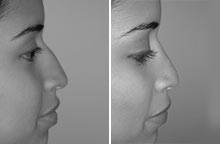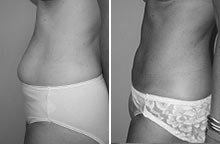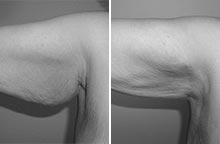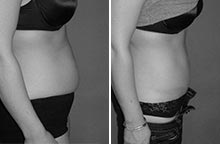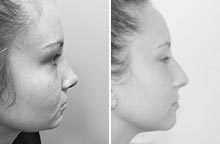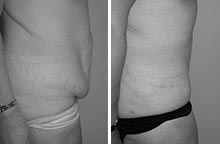Tram Flap
Consultations offered at our three convenient locations in New Jersey, Bergen County and Englewood, NJ
Undergoing a mastectomy after breast cancer is an overwhelming experience. Thankfully, advancements in plastic surgery have developed several techniques to reconstruct your breast, including TRAM flap reconstruction in Englewood.
It is important to speak with experienced plastic surgeon Dr. David L. Abramson before undergoing a mastectomy since you may be able to get a mastectomy at the same time as a reconstruction procedure. Contact us to learn more about reconstructive breast surgery.
Contents
What Is a TRAM Flap Reconstruction?
A TRAM flap procedure, or “transverse rectus abdominis muscle” flap surgery, is an autologous reconstruction: Dr. Abramson uses your own body tissue to reconstruct your breasts, creating a natural look that will expand and shrink as you gain or lose weight.
Generally, a TRAM flap reconstruction can be done in one surgery; however, a second procedure may be necessary if your breasts are asymmetrical or you develop significant scars. If Dr. Abramson takes muscle from your lower abdomen, you could lose abdominal strength.
This is one of the most common flap reconstruction surgeries. During the surgery, Dr. Abramson will move your tissue and muscle without severing the blood supply to the donor tissue.
With the doctor’s guidance, you can choose between two surgical approaches: the pedicled or free TRAM.
A pedicled procedure involves moving muscle and skin underneath your abdomen and chest to the new location. On the other hand, a free procedure involves detaching your tissue and reattaching your blood supply to blood vessels in the armpit using microvascular surgery.
Each procedure has advantages and disadvantages: a pedicled TRAM requires less time in surgery and does not require microvascular reattachment of the blood supply, while a free TRAM spares muscles, speeds up the recovery process, and reduces the risk of abdominal strength loss.
Some surgeons in Englewood find better sculpting results using the free TRAM surgical approach; however, the success of the procedure depends on how well the newly attached blood vessels heal and provide blood to the graft site. If unsuccessful, the patient could lose breast tissue.
Opting for a TRAM flap reconstruction depends on your body type, health, lifestyle choices, and personal goals. Women with poor microvasculature from years of diabetes or smoking are not good candidates for a free TRAM.
Dr. Abramson can evaluate your health to determine whether breast reconstruction suits your body type and health.
How to Prepare for TRAM Flap Reconstruction
If your primary doctor in Englewood determines that TRAM flap reconstruction surgery will not interfere with follow-up treatment for your breast cancer, you should contact Dr. Abramson to discuss reconstruction after a mastectomy. Ideally, your general practitioner and Dr. Abramson will work together to develop a strategy for your surgery.
Dr. Abramson will discuss the pros and cons of the different reconstruction options, which could depend on whether you are having a single or double mastectomy. The doctor could advise whether a mastectomy and reconstruction surgery can be done at the same time or whether you must wait until after your cancer treatment.
Before surgery, Dr. Abramson provides detailed instructions to help you prepare for surgery and recover afterward. Following these instructions is crucial carefully; they can lower the potential risk of complications, including infection, which can jeopardize the success of your breast reconstruction. You should absolutely avoid aspirin or blood-thinners while preparing for this procedure.
Recovery and Results After a TRAM Flap Reconstruction
Your recovery depends on whether you undergo TRAM flap reconstruction at the same time as your mastectomy, but you can expect to be sore and tired for a few weeks after the surgery. Dr. Abramson prescribes medication to help manage your pain, and in some cases, he might place drainage tubes to help collect and remove excess fluid.
The doctor also provides a supportive bandage or bra, which helps reduce swelling and support your breast tissue as it heals. It can take up to six weeks or more to get back to doing regular activities. This is the first phase of recovery. Some women report it takes up to a year to heal fully.
Women in Englewood who experience the best results from a TRAM flap reconstruction have realistic expectations about the surgery and its benefits. You should note that your new breasts will not look or feel like they did before your mastectomy, but they will appear natural under clothing or a bathing suit. Many women report that it helps improve their body image without the sensation of natural breasts.
Call Today to Schedule Your Consultation for a TRAM Flap Reconstruction at Our Office in Englewood
Call our plastic surgery center today to schedule your consultation for a TRAM flap reconstruction in Englewood. During your personal consultation, you will meet with Dr. Abramson, who will listen to your concerns and make a recommendation for breast reconstruction that gives you the best results.
Want to see your new you before the procedure?
With Crisalix's 3D imaging technology you can see how you would look post-procedure if full 3D.
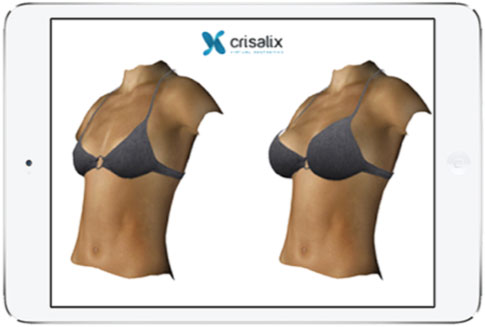 Learn More
Learn More